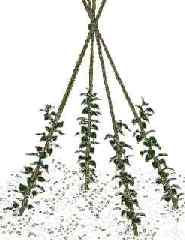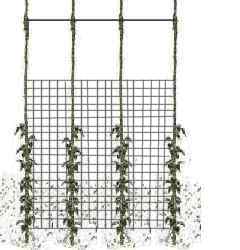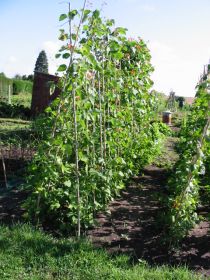It's a great idea to have your own greenhouse, but finding where you can purchase cheap greenhouses is not so easy. Now you can build your own greenhouse for a fraction of the price with great online diy greenhouse plans. Before you get started though, you might want to read these handy tips for building your own greenhouse.
Tip #1. Before you get started, you will want to research a few different types of greenhouse designs to see which might be the right design for you. Depending on the amount of space you have available and the kind of food you want to grow, you will have a few different designs that will best suit your needs.
For those with limited space, consider a flat greenhouse or hot bed. These are excellent for growing vegetables as well as low running fruit and berries such as strawberries. They are designed so that you can get into them and work them easily. If you want to grow plants that need to climb such as tomatoes then you will want to build yourself a tall greenhouse. These are great for balconies too as they take up very little ground space, but can produce a decent amount of fruit and vegetables.
Tip #2. For larger greenhouses, there are a variety of different designs from hoop to lean to as well as Victorian. Each has its own benefits and limitations, but each has ample room for you to move around in. Hoop greenhouses can be built very cheaply because they can be made entirely from PCV piping, but they take up a fair amount of space and are not as durable as some of the other designs. Getting a greenhouse guide that will show you each of the designs and explain to you how best they can be used is an excellent investment.
Tip #3. Ventilation in your greenhouses is very important and knowing how to moderate the climate inside your greenhouse, no matter what the temperature outside is vital. When deciding what kind of greenhouse to build, it's worth the investment of finding a greenhouse plan guide that includes information on how keep your greenhouse temperate when the weather outside is not ideal.
A good greenhouse diy guide will also tell you how to keep your soil healthy, how to keep your greenhouse from fungus and mould and also how to keep unwanted bugs at bay.



 The most attractive form of support is a wigwam - four or five bamboo canes tied together at the top will be sufficient. The growth at the top will be a bit crowded, but this structure will still produce a good crop of beans.
The most attractive form of support is a wigwam - four or five bamboo canes tied together at the top will be sufficient. The growth at the top will be a bit crowded, but this structure will still produce a good crop of beans.






 In general:
In general: Sauces or seasonings can add calories, fat, and sodium to vegetables. Use the Nutrition Facts label
Sauces or seasonings can add calories, fat, and sodium to vegetables. Use the Nutrition Facts label At meals:
At meals: Order a veggie pizza with toppings like mushrooms, green peppers, and onions, and ask for extra veggies.
Order a veggie pizza with toppings like mushrooms, green peppers, and onions, and ask for extra veggies. Add color to salads by adding baby carrots, shredded red cabbage, or spinach leaves. Include in-season vegetables for variety through the year.
Add color to salads by adding baby carrots, shredded red cabbage, or spinach leaves. Include in-season vegetables for variety through the year.  Vegetable tips for children:
Vegetable tips for children: Keep it safe:
Keep it safe:






 But the important question is - "Why do some people prefer organic food and some people prefer natural food?" This is because some people have the belief that synthesizing a food item results in loss of its nutrients and properties. Hence they demand natural foods. Organic food fans, on the other hand, want their food to be free of chemical fertilizers, pesticides and preservatives.
But the important question is - "Why do some people prefer organic food and some people prefer natural food?" This is because some people have the belief that synthesizing a food item results in loss of its nutrients and properties. Hence they demand natural foods. Organic food fans, on the other hand, want their food to be free of chemical fertilizers, pesticides and preservatives.




